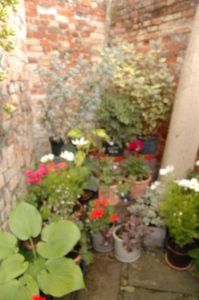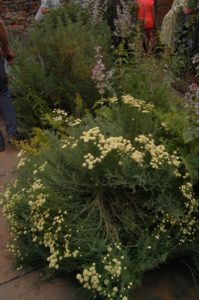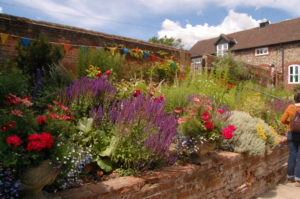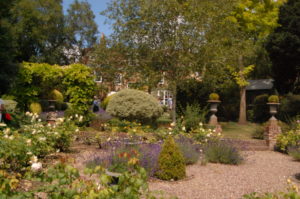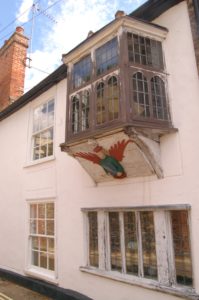Bury St Edmunds is called “A jewel in the crown of Suffolk” but to experience a jewel in all its beauty demands expert cutting. The gardens of the town are its setting, like rubies around a diamond, but only revealed once a year when the “hidden gardens” are open.
A walk around Bury gives pleasure enough to an observant visitor. Half-timbered houses and pubs, Georgian buildings, open squares and greens are there in plenty. The gardens are another matter, however. Except for the well-visited Abbey Gardens all are hidden behind facades of houses or high walls. Even the facades, which may be Georgian or Victorian, often cover medieval buildings. The gardens too have ancient features or historical origins. More than horticulture, the annual open event in aid of St Nicholas Hospice, invites one to a mystery tour of old, older and ancient delights.
Almost as old as the Abbey, celebrating its millennium two years late because of Covid, the Guildhall, while not necessarily highest on the agenda, is among the most fascinating items. It was sold after the dissolution of the monasteries and, fortunately, came into the possession of a local philanthropist who founded the Guildhall Feoffees. This body took over the charitable work formerly in monastic hands and eventually became the town council. Recently restored, the Guildhall represents the six centuries since those days and a visit gives a taste of them all. Like some others access to the garden is through the building. A diversion upstairs leads to the only surviving Royal Observer Corps centre from the Second World War. Dedicated staff are on hand to explain the vital work done. Back downstairs, through medieval and later areas the gardens are in two parts: one is for social events – and it has been used for soirees as well as a blood-curdling African rendition of “Macbeth”; the other small space is a physic garden that for “Hidden Gardens” had a genuine physician in Tudor costume to explain the uses of herbs and simples. Sharing the space is an incongruous “blast wall” behind which people could have sheltered if a bomb had fallen nearby.
One other garden reached through a building belongs to a private house: the owners sensibly cover their carpets for the occasion but bravely as well as generously permit visitors to walk right through their home. They are also prepared to explain how the garden was created, with materials carried through in the same way. The result is a delight. Less of a risk is the Farmers’ Club, obviouly in use in that manner frequently. The photography studio has even more people walking in and out, usually to view the beautiful prints on sale but also to see the tiny walled garden that makes use of walls and restricted light to grow tall and climbing plants. Lounge cafe also has customers using its garden on fine working days.
The highlights of our day were the fine Georgian house that had served as the original headquarters of St Nicholas Hospice, and has probably the longest and grandest garden in Bury, and the small lane the gives access on one side to a wildlife garden with musicians serenading visitors and the almshouses still managed by the Guildhall Feoffees. These wre perhaps challenged by a tiny courtyard garden transformed by intelligent use of pots and containers into a colourful horticultural delight – something that would have been recognized with empathy by Fergus Garrett at Great Dixter. More conventional and on a larger scale we very much enjoyed the garden for relaxation during breaks in work between two wings of the Greene and Greene soliciotrs’ office.
Just to recall the pleasures outside gardens we stopped briefly to photograph a medieval oriel window in one lane. Bury has so much to offer we could only regret not having the £1.7 million to spend on the house adjacent to it.
